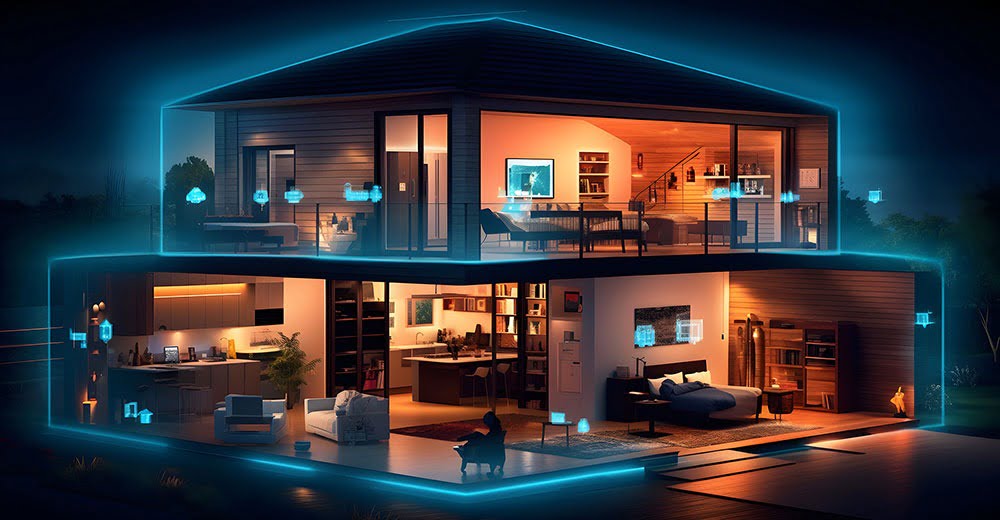“`html
Finding the Best Smart Plugs for Home Automation: Your Ultimate Guide
Estimated reading time: 12 minutes
Key Takeaways
- Smart plugs are foundational devices for home automation, offering convenience, energy savings, enhanced security, and accessibility.
- When choosing, prioritize **advanced energy monitoring capabilities**, **seamless smart home ecosystem compatibility** (especially with Alexa and Google Home), **Matter certification** for future-proofing, and **ease of setup**.
- Matter certified smart plugs simplify interoperability across different brands and ecosystems.
- Look for **easy to set up smart plugs** with intuitive apps and straightforward connection processes, particularly for beginners.
- Top recommendations include TP-Link Tapo P125M Mini, Govee Smart Plug Pro, and GE Cync Smart Indoor Plug, each with unique strengths.
- Consider your specific needs—energy monitoring, ecosystem integration, or beginner-friendliness—to make an informed decision on the **best smart plugs for home automation**.
Table of contents
- Finding the Best Smart Plugs for Home Automation: Your Ultimate Guide
- Key Takeaways
- What Exactly Are Smart Plugs and Why They’re Essential for Home Automation
- Key Features to Prioritize When Selecting the Best Smart Plugs
- Advanced Energy Monitoring Capabilities
- Seamless Smart Home Ecosystem Compatibility
- The Significance of Matter Certification
- Prioritizing Ease of Setup and Use
- Selecting the Best Smart Plugs for Beginners
- Top Smart Plug Recommendations: Putting Features to the Test
- Making Your Informed Decision on the Best Smart Plugs
In today’s rapidly evolving technological landscape, convenience and efficiency are paramount. Smart home technology has emerged as a powerful force, transforming our living spaces into more responsive and automated environments. At the heart of this revolution are smart plugs, simple yet incredibly effective devices that bridge the gap between traditional appliances and the digital world. They offer unparalleled control and automation, simplifying daily routines and enhancing overall comfort. This guide is designed to help you navigate the market and find the best smart plugs for home automation. You’re likely in a commercial investigation phase, seeking the most suitable products to invest in, and we’re here to provide the insights you need. We’ll delve into crucial features like energy monitoring, Matter certification, compatibility with popular assistants, and how easy they are to set up. Our research is informed by trusted sources such as Bob Vila and Listful, ensuring you get comprehensive and reliable information.

What Exactly Are Smart Plugs and Why They’re Essential for Home Automation
At their core, smart plugs are intelligent adapters that plug into your existing wall outlets. They act as intermediaries, allowing you to control any appliance or device plugged into them remotely. Think of them as a smart upgrade for virtually any “dumb” device in your home. These devices can be Wi-Fi or Matter-enabled adapters, each offering different connectivity options and benefits.
Their role in home automation is foundational. Smart plugs empower you to:
- Schedule device operation: Set your coffee maker to start brewing before you wake up, or have your lamps turn on and off at specific times to simulate occupancy.
- Create custom routines: Integrate them into “good morning” or “good night” routines that control multiple devices simultaneously. For example, a “good night” routine could turn off all lights and entertainment systems with a single command.
- Control appliances from afar: Whether you’re at work, on vacation, or just in another room, you can use a smartphone app or voice commands to turn devices on or off.

The benefits are numerous and significant, as highlighted by Bob Vila and Listful:
- Convenience: The ability to control devices with a tap on your phone or a spoken command is a game-changer. No more getting out of bed to turn off a light or worrying if you left an appliance on.
- Energy Savings: Smart plugs can significantly reduce electricity bills. By scheduling devices to turn off when not needed and monitoring their consumption, you can eliminate “phantom power” draw from devices in standby mode and identify energy-hungry appliances.
- Enhanced Security: Automating lights to turn on and off when you’re away can create the impression that someone is home, acting as a deterrent to potential intruders.
- Accessibility: For individuals with mobility issues, smart plugs can be invaluable, allowing them to easily manage their home environment without physical strain.
Key Features to Prioritize When Selecting the Best Smart Plugs
Advanced Energy Monitoring Capabilities
One of the most compelling features of modern smart plugs is **energy monitoring**. This capability allows the smart plug to track the real-time and historical electricity consumption of any device connected to it.
Why is this so important? Understanding your energy usage is the first step towards reducing it. Energy monitoring helps you pinpoint exactly where your electricity is going, identify “energy vampires”—devices that quietly consume power even when turned off—and make informed decisions to lower your electricity bills. For those looking to optimize their energy efficiency, **smart plugs with energy monitoring** are an absolute must-have. For instance, the Govee Smart Plug Pro is often cited for its accurate energy tracking and a user-friendly scheduling app that makes managing consumption simple.

This feature provides tangible data that empowers users to take control of their energy consumption.
Seamless Smart Home Ecosystem Compatibility
For smart plugs to truly unlock their potential, they need to work harmoniously with your existing smart home platform. Seamless integration is crucial for enabling features like voice control and complex automations, especially if you already rely on smart assistants.
Focusing on **smart plugs compatible with Alexa and Google Home** is a wise move for most users. These popular voice assistants allow you to control your connected devices using simple voice commands and integrate the plugs into custom routines. For example, you can say, “Alexa, turn off the living room lights,” and your smart plug will comply. Compatibility extends to other major ecosystems like Apple HomeKit and Samsung SmartThings, so it’s essential to check which platforms a plug supports. Devices like the TP-Link Tapo P125M and Linkind Smart Plug are frequently praised for their robust compatibility.
This interoperability ensures that your smart plugs become an integrated part of your connected home, rather than isolated devices.

The Significance of Matter Certification
Matter is a new, unified smart home connectivity standard that promises to revolutionize how smart devices interact. Its primary goal is to ensure interoperability between different brands and ecosystems, simplifying setup and enhancing reliability.
Choosing **Matter certified smart plugs** means investing in devices that are designed for the future. These plugs offer easier setup processes, increased reliability, and the ability to work seamlessly across various smart home platforms—including Apple Home, Google Home, Amazon Alexa, and Samsung SmartThings—often without needing separate hubs for each. This standardization significantly reduces the complexity of building and managing a smart home. Products like the TP-Link Tapo P125M and GE Cync Smart Indoor Plug are leading the way with Matter certification, providing a glimpse into a more connected and less fragmented smart home future.

Think of Matter as the universal language for smart home devices.
Prioritizing Ease of Setup and Use
For many, the prospect of setting up smart home technology can seem daunting. That’s why **easy to set up smart plugs** are so crucial for a positive user experience, especially for those new to the smart home world.
Ease of setup typically involves straightforward in-app instructions, a quick and reliable connection process to your Wi-Fi or Matter network, and an intuitive app interface. The physical design also plays a role; compact, “mini” designs are often preferred because they don’t obstruct adjacent outlets, maintaining the full utility of your wall socket. Products like the TP-Link Tapo P125M Mini and WeMo Mini Smart Plug are frequently highlighted for their user-friendly setup experiences, making them excellent choices for beginners or anyone who values simplicity.

A plug that is difficult to set up can quickly negate its potential benefits.
Selecting the Best Smart Plugs for Beginners
For those just embarking on their smart home journey, choosing the right smart plug can make all the difference. The focus should be on simplicity, broad compatibility, and reliability.
Here are the key priorities for beginners:
- Broad Compatibility: Look for plugs that work seamlessly with the most widely-used voice assistants, such as Amazon Alexa, Google Assistant, and Apple HomeKit. This ensures that your new smart plug will integrate smoothly with devices you might already own or plan to purchase.
- Simplified Setup: Reiteration is key here – the easier the installation process, the better. Proven, straightforward installation procedures and user-friendly apps are essential to avoid frustration.
- Reliable Support: Consider brands that offer good customer service or have active online communities. Having a resource for troubleshooting can be invaluable when you’re learning the ropes.

Based on these criteria, options like the TP-Link Tapo P125M Mini and GHome Smart Mini Plug are highly recommended for beginners due to their ease of onboarding and excellent integration capabilities. They provide a gentle introduction to the world of smart home automation.
Top Smart Plug Recommendations: Putting Features to the Test
Now that we’ve covered the essential features, let’s dive into some specific product recommendations that stand out in the market. These smart plugs have been recognized for excelling in various areas, making them strong contenders for the title of the best smart plugs for home automation.
TP-Link Tapo P125M Mini Smart Wi-Fi Plug
- Key Features: Fully **Matter certified**, works with Alexa, Google Assistant, and Apple HomeKit; features a compact, mini design.
- Pros: Extremely easy setup process, broad compatibility across major ecosystems, UL-listed for safety, future-proofed with Matter.
- Cons: Does not include energy monitoring capabilities, some users have reported occasional lag with Alexa commands.
- Ideal Use: This plug is an excellent choice for beginners and users who prioritize Matter certification and a simple, reliable user experience over advanced features like energy tracking.

Govee Smart Plug Pro (H5001)
- Key Features: Offers excellent **energy monitoring** with real-time and historical data, integrates with Alexa and Google Assistant, supports scheduling and timers.
- Pros: Accurate energy tracking provides valuable insights, robust app with advanced scheduling options, reliable performance.
- Cons: Not Matter certified, can be slightly larger than mini plugs, requires a Govee Home app.
- Ideal Use: Perfect for users focused on energy efficiency and cost savings, who want detailed insights into their appliance consumption.

GE Cync Smart Indoor Plug (with Energy Monitoring)
- Key Features: Includes **energy monitoring**, compatible with Google Assistant and Alexa, Wi-Fi enabled, part of the wider GE Cync ecosystem. Some versions are also Matter compatible.
- Pros: Good value for an energy-monitoring plug, integrates well with other Cync devices, easy setup, reliable connection.
- Cons: The app can sometimes feel less intuitive than competitors, limited to Wi-Fi if not a Matter version.
- Ideal Use: A solid choice for those looking for a budget-friendly smart plug with energy monitoring capabilities and who are invested in or open to the GE Cync ecosystem.

Kasa Smart Plug Mini (KP115)
- Key Features: Features **energy monitoring**, compact design, works with Alexa and Google Assistant, uses the reliable Kasa Smart app.
- Pros: Excellent value for money, highly reliable performance, intuitive and feature-rich Kasa app, doesn’t block adjacent outlets.
- Cons: Not Matter certified, lacks HomeKit support.
- Ideal Use: A fantastic all-rounder for users who want energy monitoring, a compact design, and a dependable smart home experience without breaking the bank.

Linkind Smart Plug (2-pack)
- Key Features: Offers **compatibility with Alexa and Google Home**, easy setup via Wi-Fi, often sold in value packs.
- Pros: Affordable for multi-room automation, simple to connect and use, good for basic on/off scheduling and remote control.
- Cons: No energy monitoring, not Matter certified, app functionality is basic.
- Ideal Use: Great for users looking to automate multiple simple devices (like lamps or fans) affordably and who don’t require advanced features.

Making Your Informed Decision on the Best Smart Plugs
Choosing the right smart plug doesn’t have to be complicated. By understanding your needs and prioritizing the right features, you can make an informed decision that enhances your home automation experience. Remember the key decision factors we’ve discussed:
- Energy Monitoring: If your primary goal is to reduce electricity bills and understand your energy consumption, focus on smart plugs with energy monitoring.
- Matter Certification: For future-proofing and ensuring maximum interoperability with a wide range of devices and platforms, prioritize Matter certified smart plugs.
- Compatibility: Ensure the plugs work with your preferred voice assistant (Alexa, Google Assistant, HomeKit) and smart home hub.
- Ease of Setup: If you’re new to smart home technology, look for easy to set up smart plugs that offer a simple and intuitive user experience. These are often highlighted as the best smart plugs for beginners.

Consider your current smart home ecosystem. If you’re heavily invested in Amazon Alexa, ensure your chosen plugs have excellent Alexa integration. If you’re building your smart home from scratch or planning significant expansion, Matter certification becomes even more important. Think about the devices you intend to control: are they simple lights, or energy-hungry appliances where monitoring would be beneficial?
Making a smart choice now will lead to a more seamless and enjoyable smart home experience in the long run. By aligning your purchase with your specific needs, you’re investing in convenience, efficiency, and control for your home.

To further your understanding and explore more smart home possibilities, consider these resources:
“`






